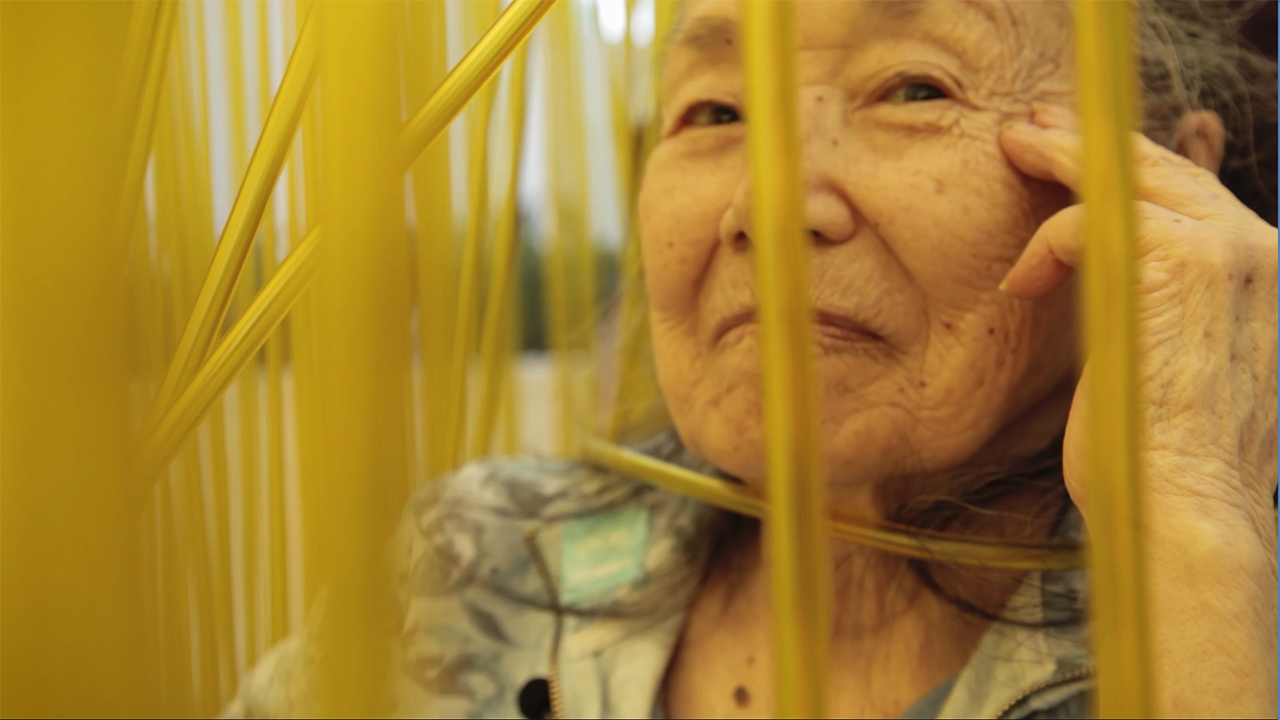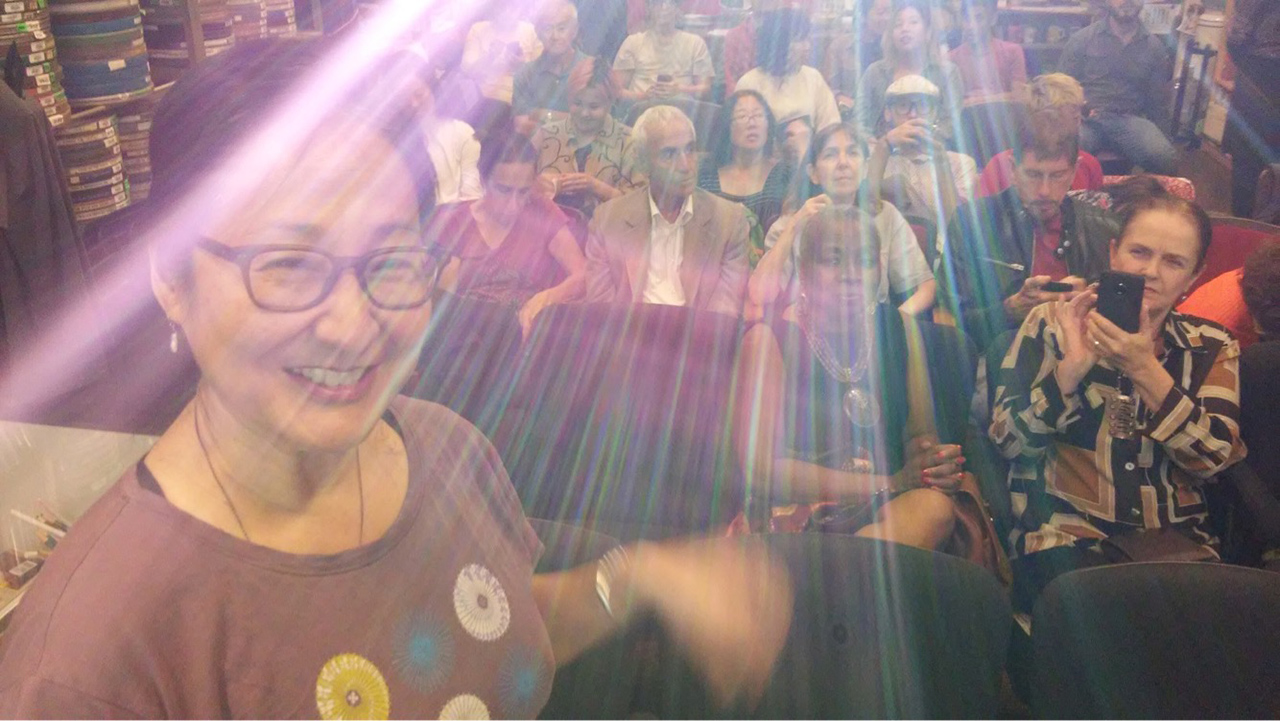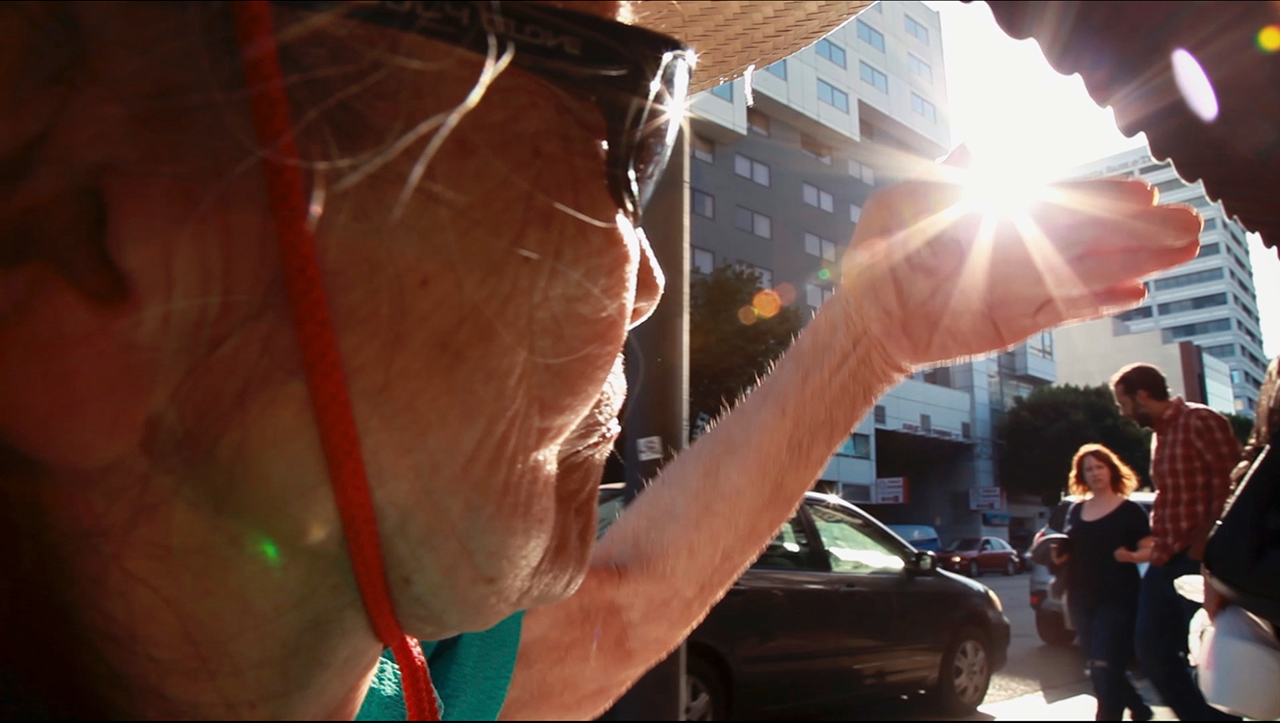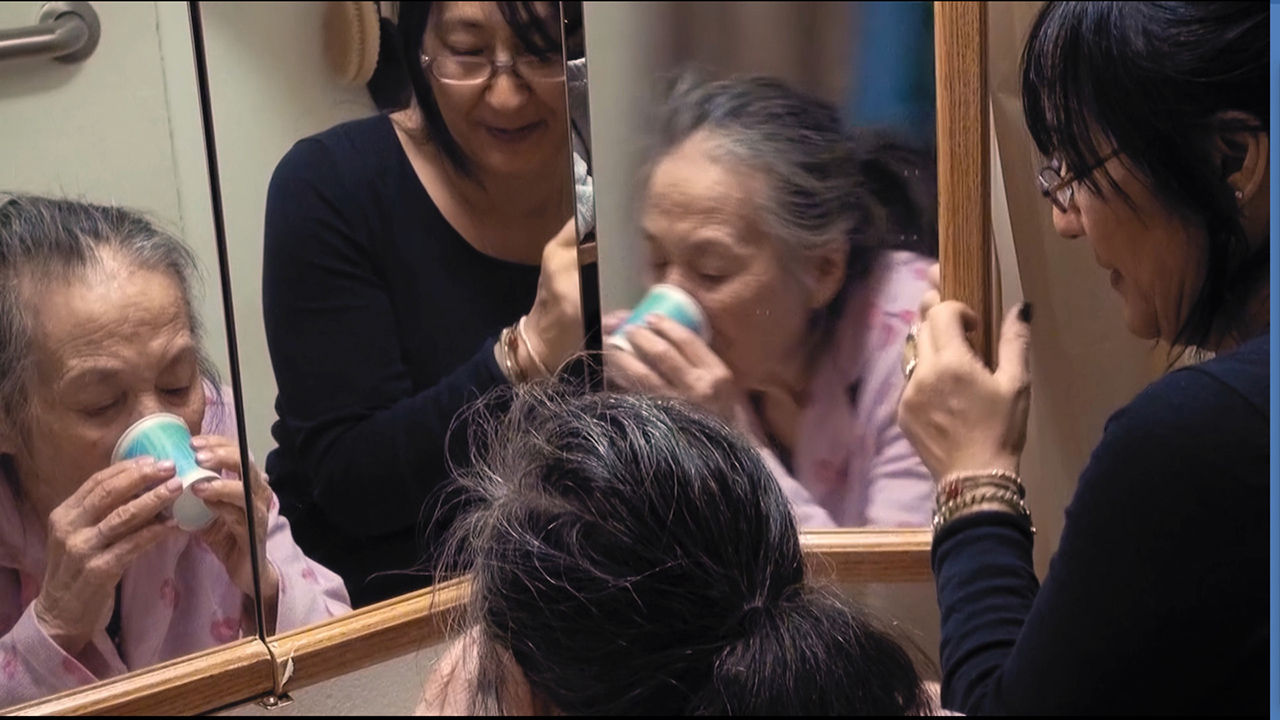A sneak preview before the Japan premiere. Screenings: 8/13 (Sat) 8:00pm (outdoor & indoor, with zoom Q&A with Rea Tajiri), 8/15 (Mon) 1:00pm (indoor), Online UPAF (9/3-11, Japan only, limited to the first 50 viewers -don’t miss it!)
https://www.wisdomgonewildfilm.com/ (World Premier at BLACKSTAR FILM FESTIVAL, Saturday, August 6th, 2022 In-person & Virtual -if you’re in the US, check this out!)
Director: Rea Tajiri, Producer: Siân Evans, Re-recording Mixer and Sound Editing: Gisela Fullà-Silvestre, Editor: Catherine Hollander, Associate Producer: Reiko Tahara, Music: Shakuru Tajiri, Percussion: Brion Tajiri, Production Designer: David Wasco, Set Decorator: Sandy Reynolds Wasco, Cinematographers: Christian Bruno, Sherri Kauk, Dru Mungai, Second Unit Cinematographers: Ann Kaneko, Oscar Molina, featuring: Rose Tajiri, Rea Tajiri.
In this moving and original reflection on aging, mortality and transformation, Rea Tajiri partners with her mother, Rose Tajiri Noda, to create a film about the final sixteen years of Rose’s life as a person living with dementia. Together, they nurture their connection through listening, art, and music. Rose performs songs from her youth, providing the soundtrack for time travel, as we witness her evolution across nine decades of living. Delicately weaving between past and present, parenting and being parented, the film reflects on the unreliability of memory and the desire to reinvent one’s own life when memories fail us. It is a poignant meditation on the abiding strength of the unique relationship between mothers and daughters.
Trivia 1: History and Memory, Rea’s 1991 work (which is referred by the young Rea in this work when Rose interviews rea) was screened at UPAF in the past. This work is still highly regarded today as one of the early personal documentary about the concentration camp experience of Japanese-Americans during WWII. Watching the two films as a pair would give you a profound experience of listening to the Japanese Americans themselves expressed through artistic film work. For Online UPAF 2022, we plan to make them available as a pair.
Trivia 2: The beauty salon at Rose’s assisted living housing was created (for the film) by the Production Designer David Wasco and Set Decorator Sandy Reynolds Wasco, who are an Academy Award recipient couple responsible for creating every set design for Tarantino’s films from “Reservoir Dogs” to “Kill Bill” (“Kill Bill” set is a collaboration with Production Designer Yohei Taneda), Wes Anderson’s “The Royal Tenenbaum”, as well as “La La Land” by Damien Chazelle. They had met at a set of “El Norte” in the 80s, and it was Rea’s first film production job.
About the filmmaker:
Chicago-born filmmaker and visual artist Rea Tajiri’s work advances the exploration of forgotten histories, multi-generational memory, landscape and the Japanese American experience. Her groundbreaking, award-winning film, digital video, and installation work, has been supported by numerous grants, fellowships, and artistic residencies, and has been exhibited widely in museums, on television and in international film festivals. Her experimental documentary HISTORY AND MEMORY: FOR AKIKO AND TAKASHIGE, and feature film STRAWBERRY FIELDS, have influenced a generation of filmmakers, leading to their inclusion in Asian American, Cinema Studies, and Women’s and Gender Studies curricula in the US. Both films are featured on the Criterion Channel in the Sentient Art Films program MY SIGHT IS LINED WITH VISIONS.
Her multi-site installation project WATARIDORI: BIRDS OF PASSAGE, (2018) in Philadelphia mapped and enlivened forgotten traces of local Japanese American history linked in a series of locations around the city. Her feature documentary Lordville (2014) probed the material and immaterial traces of an upstate New York town’s history. Her current documentary Wisdom Gone Wild, chronicles her sixteen-year journey of elder care for her mother who had dementia, and illuminates their lifelong passion for the arts and the language of the elders. As an advocate of emerging artists and directors, Rea co-founded The Workshop, an incubator for Asian American film directors in New York City.
Directors’ Statement
Wisdom Gone Wild tells the remarkable story of my mother, a Nisei woman who survived incarceration in an American concentration camp during World War II, and developed dementia late in life. Through interactions with me, her daughter and care partner, she bestows a new name and identity on herself, transforming her past along with her present. In its form and content, the film centers her perspective rather than a disease, telling the story of a life to be valued, not a problem to be willed away. It calls for a societal shift in how we view dementia—one that honors subjective experience, cultural difference, inclusivity, and personhood, to counter the devaluing of age and the dismissal of the knowledge we can gain from someone who has lived a long life. This is a time when the experiences of our elders may be shared through a different lens and perhaps a new language: a wisdom gone wild.
In 1997, my first feature film was going to screen at the Venice Film Festival. I was ecstatic to share the news with my mother. We had a conversation about the event—but the following day, she had forgotten. In our long-distance call, she accused me of being an imposter imitating her daughter. Destabilized, I spent the festival ruminating on what had happened. Over the next few months, I came to accept that my mother was in the early stages of dementia. To me, her life had always been shrouded in mystery, but I had always thought a moment would come when she would finally tell me everything, so I was devastated to realize that a logical, linear understanding of her life was slowly eroding. Overcome with grief, I began to reckon with the nature of impermanence.
After many doctor visits, my mother was diagnosed with vascular dementia in 1999. This began a journey that would last the next sixteen years, as I sought a way of caring for and being with my mother that respected her humanity and my need to engage with her. To afford her care, I shifted how I earned a living. I took on responsibility for her affairs. I put my creative filmmaking life on hold. Still, our relationship was fraught with terrible hardships and challenges. I turned towards Buddhist teachings, began to draw on my mother’s lifelong love of visual art, and worked with a skilled gerontologist. Very simple acts of listening deeply, entering my mother’s world, and following her mind allowed us to connect. Our power dynamics shifted, as I moved from being her ‘caregiver’ to her ‘care partner.’
No longer making films, I began taking photographs of my mother to send as family news updates. Through the camera, my mother and I reconnected. Dementia allowed my mother to become very present—a skilled performer, able to powerfully communicate the mood of a given moment. My father had been a professional photographer, and we were constantly in front of his lens growing up. I realized that my memories were replaced by the images he took of us, and this inspired me to begin filming my mother as well.
As I recognized that my mother and I were partnering with each other, and that she enjoyed performing and sometimes had an agenda of what she wanted to communicate, my filming became more intentional. Once I set out to create this film, I interwove the archive of carefully-composed family photos my father had left behind, and searched through old home movies, where I discovered I had been trying to teach her to videotape me thirty years prior.
The structure of the film between past and present, mirroring my mother’s time-traveling consciousness in dementia. In the end, my mother revealed much more about her history than a straightforward linear description might have offered, performing rich embodiments of characters and the animals that she grew up with during her California farm life.
She also revealed details about the war that have only recently been recognized in conventional histories. An anecdote about how “the Buddhist became Christians” alluded to an unexamined history of race-based religious persecution, and the struggles of West Coast Buddhists, to survive incarceration and to avoid deportation, which was not widely discussed at the time, but has recently been featured in an exhibit at the Japanese American National Museum. Similarly, she insisted on recalling the history of solidarity between Black people and incarcerated Japanese Americans: “they came on our side, they came on our side,” she told me, “We want our children to know…”
Toward the end of her life, as her dementia advanced, my mother’s language grew even more abstract and poetic. As she became more frail, she became more urgent about key things to impart to me: She was continually “learning” about herself, she insisted, and continuing to “become”—an inspiring revelation that in advanced age, and even in dementia, we can still aspire to learn and evolve.
My key message in this film is for audiences to consider the possibilities of connection and intimacy with loved ones who live with dementia. With this intimate portrayal, I hope to normalize witnessing and listening to elders, and to value their stories, their wisdom and their lived experience.
2022, 84.5min, documentary, color, USA. In English with Japanese subtitles for Deaf and Hearing-impaired.



